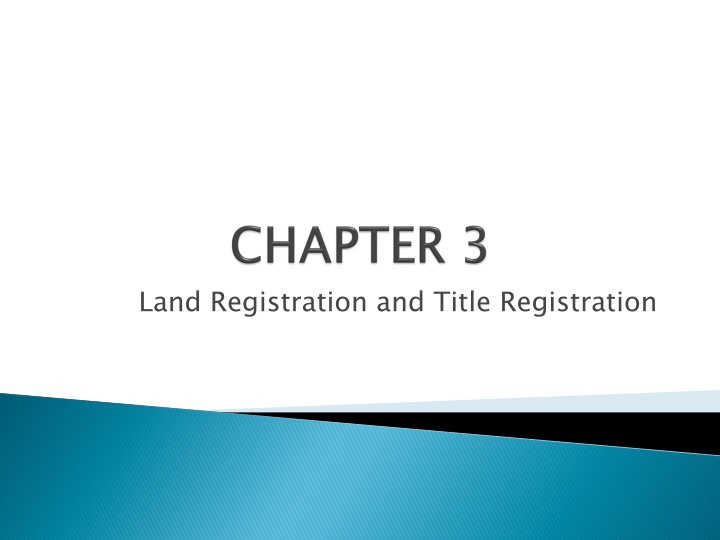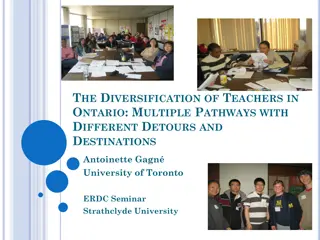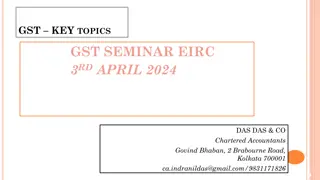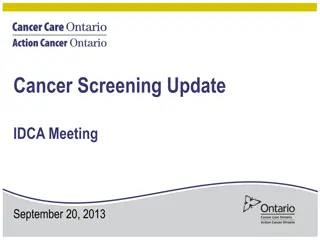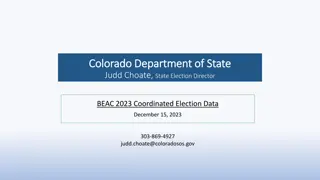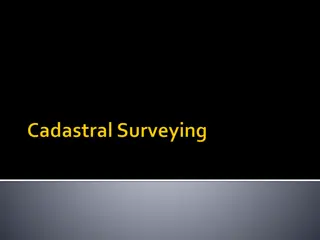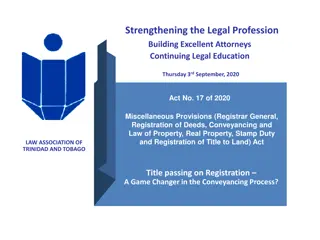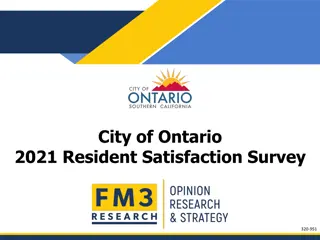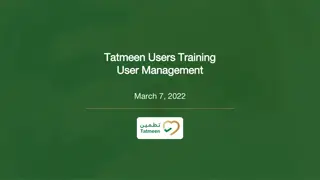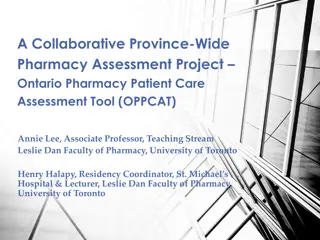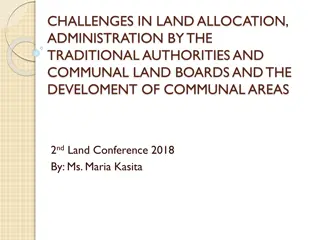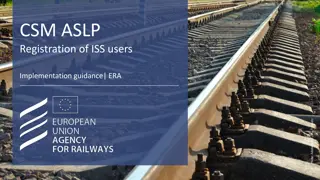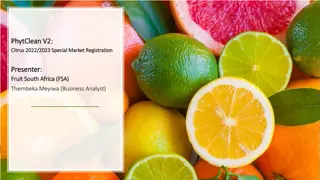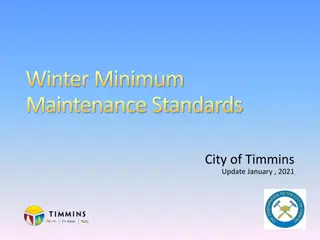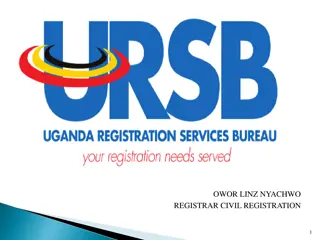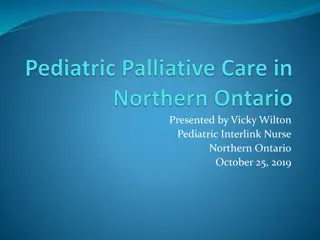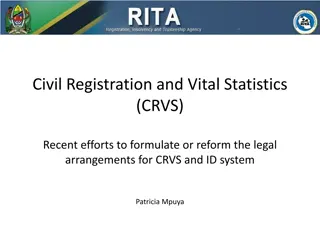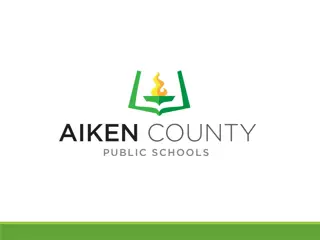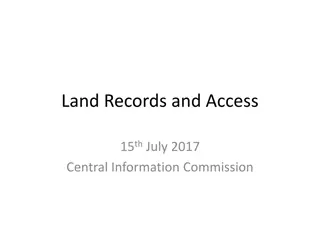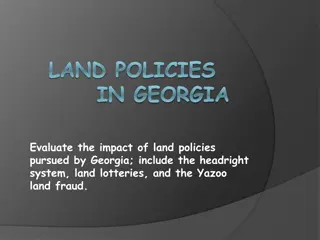Land Registration Systems in Ontario
Explore the two main land registration systems in Ontario - Registry System and Land Titles System. Dive into the differences, processes, and key principles of each system, including the importance of title searches, chain of titles, and the assurance provided to property owners. Gain insights into the evolution from paper-based to online registration systems and the implications for property ownership in Ontario.
Download Presentation

Please find below an Image/Link to download the presentation.
The content on the website is provided AS IS for your information and personal use only. It may not be sold, licensed, or shared on other websites without obtaining consent from the author.If you encounter any issues during the download, it is possible that the publisher has removed the file from their server.
You are allowed to download the files provided on this website for personal or commercial use, subject to the condition that they are used lawfully. All files are the property of their respective owners.
The content on the website is provided AS IS for your information and personal use only. It may not be sold, licensed, or shared on other websites without obtaining consent from the author.
E N D
Presentation Transcript
There are two systems in place 1. Registry Act (Registry System) old system 2. Land Titles Act (Land Titles System) new system Both these systems used to be paper-based but they are now online The registry system will ultimately disappear from Ontario because it is being converted to Titles System
Land is registered either under Land Titles Act or Registry Act but never both in Ontario Land registry typically takes time Lawyers must go through at least 40 years of history in abstract books They must consider the chain of titles to see history of the property This involves looking at previous owners, the seller of the property, the number of liens, whether they have been paid etc. Chain of titles should trace back to the crown patent (root of title) because the crown used to own all land
The Registry System adopts what is called the tract indexing system This entails recording all property interests on a geographic basis Registration is based on location The Registry System is not guaranteed by the Registrar
Land titles are quick Land Title System is based on 3 principles: 1. Mirror What you see is what you get Land Titles Register is the ONLY information source used by purchasers of property The title, like a mirror, reflects current facts about a property If you cannot see a fact on the title, you need not concern yourself about it
2. Curtain A curtain lies between now and 40 years of history You don t need to concern yourself with what lies behind the curtain, so long as you have insurance 3. Insurance The Registrar guarantees or insures title The register has been insured under the Land Titles Assurance Fund Fraud and selected errors protected if compensation cannot be obtained through other means
Example: Ben owns a house which has not occupied for a long period of time. John, who Ben does not know, forges papers and registers the property in his name. He goes ahead and sells it to an innocent buyer Terry, who constructs a modern house on the property. Ben discovers this and undertakes legal action against both John and Terry. If John has disappeared or does not have money to compensate Ben, Ben may turn to the Land Titles Assurance Fund for settlement.
All land title entries are allotted PIN numbers while registration is based on Parcel Numbers (since Registry Act uses geographic location) Most provincial Crown patents (titles) need to be filed under the Act
Land Titles Absolute (first time application) This designation is given to parcels brought under the Land Titles System as a first time application Such property must never be registered in Land Registry It must be registered first in Land Titles System Land Titles Converted Qualified (converted from registry to titles) This designation is given to parcels brought from the Land Registry into the Land Titles
An abstract book tracks the history of a property by looking at its chain of titles in the registry A land titles register is an abstract book equivalent for titles The curtain principle applies if registration is done based on only today s information The Land Registry System is used if a property is not on Land Titles
Land titles registration can be done online through a system called POLARIS POLARIS = Province of Ontario Land Registration and Information System This system uses property mapping databases (plans and surveys) along with a title index (description of ownership of property) POLARIS registers property based on parcels, much like the land titles system When properties are converted to land titles under POLARIS, they are assigned a Property Identification Number (PIN) Properties can then be found using their PIN
TERANET is a company that works with the Ontario government to help improve POLARIS TERAVIEW is a software that facilitates online registrations It acts as a gateway to the online system, enabling real estate practitioners and lawyers to perform research online
Online registration is POLARIS and TERAVIEW together The software used to complete online registrations is called TERAVIEW
There are 5 standard documents: 1. Transfer deed of land (FORM 1) 2. Charge of mortgage (FORM 2) 3. Discharge of mortgage (FORM 3) Seller is discharged from mortgage once all dues are paid 4. Document General (FORM 4) Standard document that consists of information about power of attorney, survivorship, liens and their discharge etc. Schedule (FORM 5) General attachment containing explanation of documents which require further details It is a standard attachment to the four other forms, i.e. Schedule A, B, C
The Reform Act consists of 5 forms Schedule 5 is a standard attachment
Crown land is land which is owned by the government Crown land may not be traded between private individuals
Native Lands or Native Reserves are lands that are regulated by the Federal Government These lands have been given to Native Indians for them to use and develop them RECAP: Which government is responsible for maintaining Native Reserves? The Federal Government
A power of attorney is written authorization granted by one party to another to act on their behalf in legal matters, including private affairs and businesses The party who gives power of attorney is called grantor , and the party to whom power of attorney is given is called attorney
There are 3 types of power of attorney 1. Power of Attorney for Personal Care (Personal) Deals with medical care decisions 2. Power of Attorney (General) Deals with property and other matters, but is not commonly used since it cannot be exercised during grantor s incapacity 3. Continuing Power of Attorney (Continuing) Preferable since it is most powerful of the 3 It continues to operate even during grantor incapacity If you become mentally incapable of managing your own properties, your attorney will be authorized to do so on your behalf
Implied covenants are promises that are implied from the existence of a relationship Example: A mortgage borrower enters an implied covenant that he will pay off the mortgage amount, pay property taxes and insurance premiums and keep the property in good condition In the event of a breach of the implied covenant, the lender may take legal action against the borrower (i.e. file for foreclosure of property)
